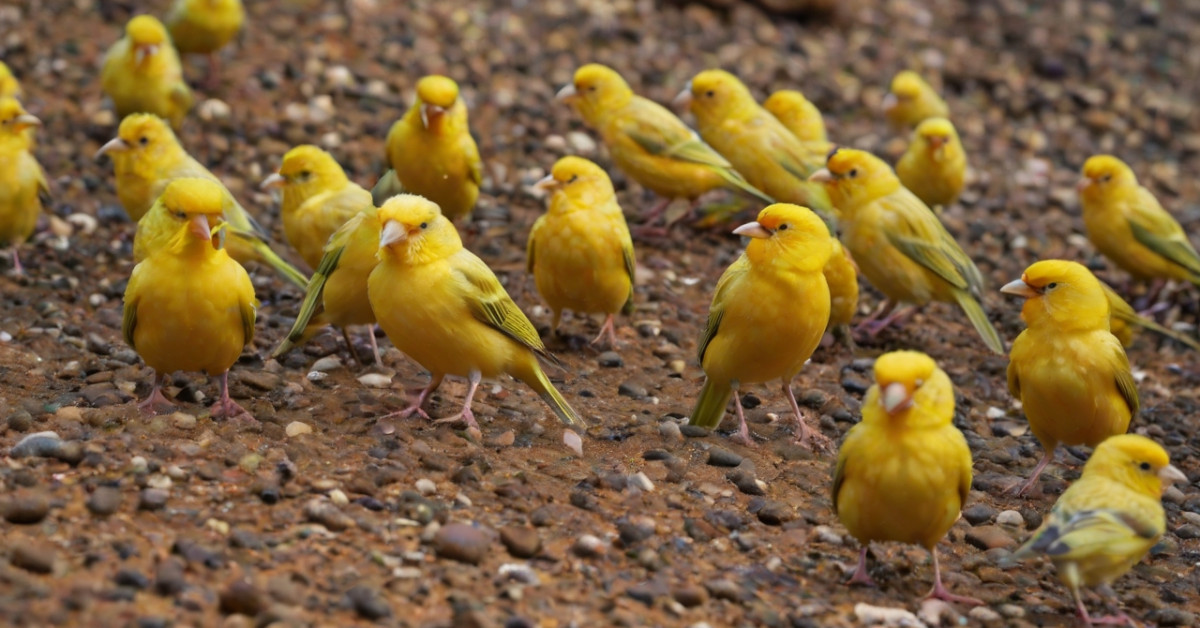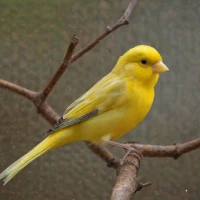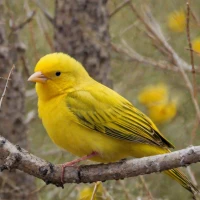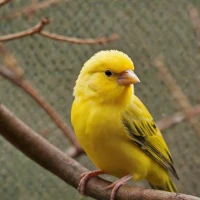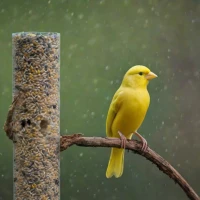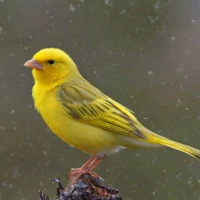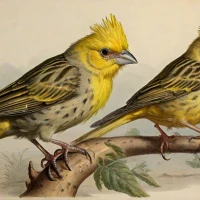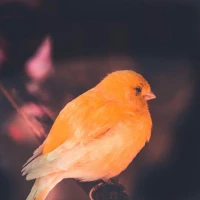Exploring the World of Canaries: A Guide to the Most Popular Types
Every journey, they say, begins with a single step—or in this case, a single chirp. Growing up, my grandma had a couple of vibrant canaries that I was fascinated with. Bright yellow and always chirping away joyfully, they were my first introduction to the mesmerizing world of these feathered songsters. I remember begging her to let me feed them, which eventually turned into me reading every scrap of information I could find about different canary types. So, when I decided to delve deeper into the world of canaries for this guide, it felt like a trip down memory lane. 🐤
A Brief History of Canaries
Hanoverian Canaries, originally hailing from the Canary Islands (yes, our tiny chirpy friends lend their name to an entire archipelago), have been captivating bird enthusiasts since the 17th century when Spanish sailors first brought them to Europe. A lesser-known fact: these birds were initially bred by monks who were undoubtedly enchanted by their melodies. Over centuries, selective breeding has given rise to various types, each with its unique characteristics.
Types of Canaries: A Melodious Symphony
Diving into the types of canaries, it’s a bit like exploring a well-orchestrated symphony. Each type brings its own melody, visual appeal, and personality to the stage.
1. Color-Bred Canaries
When it comes to visual appeal, color-bred canaries are like the Monet’s of the bird world. These birds are bred specifically for their vibrant hues, ranging from the iconic yellow to striking reds and oranges. The selective process behind these vivid colors involves genetic know-how that is both fascinating and complex.
Fun Fact: Did you know that their diet can affect their color? A canary’s red plumage, for instance, is often enhanced by feeding them foods high in carotenoids like carrots and sweet potatoes.
2. Type Canaries
Now, if you’re someone who appreciates physical form and structure, the type canaries are your muse. These birds are bred for their distinctive body shapes and sizes. Fancy breeds like the Gloster, which sports a cute bowl-shaped crest, or the upswept feathers of the Parisian Frill, are sure to steal the spotlight.
3. Song Canaries
Ah, the singers of the aviary world. Song canaries are specifically bred to produce enchanting melodies that can brighten even the dullest of days. The Roller Canary, known for its soft and continuous song, and the Waterslager, which produces a unique water-like sound, are among the prime examples of these melodious types.
Caring for Your Canary
Bringing a canary into your home is like adding a sprinkle of joy to your daily routine, but it comes with its responsibilities. Here’s a quick rundown on how to keep your feathered friend chirpy and healthy.
1. Diet and Nutrition
A varied diet is essential. Think of canaries as tiny gourmets who enjoy a mix of seeds, fruits, and vegetables. It’s crucial to provide them with a balanced diet to keep those feathers shiny and songs sweet.
Pro Tip: Avoid giving avocado and chocolate as they can be toxic to canaries.
2. Habitat and Environment
Their cage should be spacious enough for fluttering and exercising. Canaries love to perch high, so including multiple perches at different heights can recreate their natural habitat somewhat.
I remember my own canary, Pip (named after my favorite Dickens character), dancing about in sheer delight every time a new perch was added. Adding swings and toys can also keep them mentally stimulated.
3. Health and Well-being
Regular check-ups with an avian vet are a must, just like any other pet. Ensuring they have fresh water daily and maintaining cleanliness can prevent common health issues.
The Joy of Breeding Canaries
If you’re considering breeding canaries, be prepared for an exhilarating journey. These birds are not just visually stunning but also have intriguing breeding behaviors. It’s like watching nature’s drama unfold right before your eyes.
1. Selecting Breeding Pairs
Choosing the right pairs is paramount. You want to ensure genetic diversity and health for vibrant offspring. It’s all in the details—appearance, song quality, and health need to be spot on.
2. Nesting and Egg Care
Canaries lay their eggs in neat little nests that you can provide or allow them to create. It’s vital to maintain a stress-free environment during this period. I still recall the first time Pip laid eggs; the anticipation and eventual joy of watching tiny canary chicks hatch is an inexplicable pleasure.
Canary Shows: The Bird Pageants
Canary shows are a whole other world, where enthusiasts gather to showcase their prized birds. It’s quite akin to a beauty pageant, but for feathered contestants. Judging is based on song, color, and type depending on the category one is competing in.
These events offer a fantastic opportunity to mingle with fellow canary enthusiasts and share insights, stories, and tips.
Final Thoughts and Personal Reflection
In closing, embarking on the journey of exploring and keeping canaries has been an enriching experience—filled with chirps, colors, and charming company. These birds bring more than just aesthetic pleasure; they offer companionship and a fascinating look into nature’s wonders. Thanks for taking the time to fly through this guide with me. If you’re considering these delightful creatures, remember every chirp carries a story. 🐦❤️
Overall, canaries are more than just pets; they are a delightful blend of nature’s artistry and song. Thank you for hopping along on this flight through the vibrant world of canaries.
Catch y’all on the chirp side! 🌟
